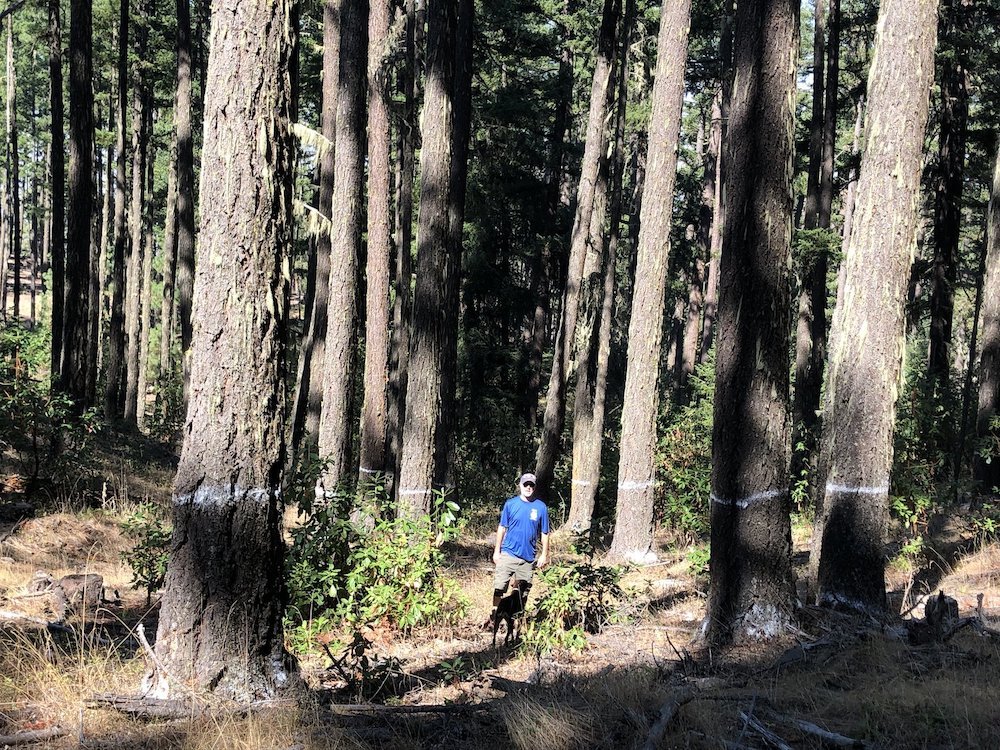CONSERVATION WIN: Illegal old-growth logging scheme struck down by the courts!
In celebration of Earth Month, we are excited to announce the official court ruling denouncing the Medford District BLM’s illegal old-growth logging scheme called “Integrated Vegetation Management”!
Yesterday, Federal District Court Judge Ann Aiken released the official court ruling stating the IVM logging program illegally authorized the destruction of old-growth forest stands located within Late Successional Reserves. In particular, the court pointed out that BLM old-growth timber planners were refusing to implement the requirements of their own Resource Management Plan to protect Late Successional Reserves.
KS Wild has been tracking, collecting comments, and trying to improve IVM since 2020. This legal ruling is a massive success for the conservation of Oregon’s forested federal public lands as it will help set the stage for future BLM efforts to log old-growth reserves and our ability to stop those efforts.
Let’s break down the BLM’s Integrated Vegetation Management attempt and the community’s success in halting it:
What the integrated vegetation management project proposed
The BLM‘s IVM project proposed logging up to 4,000 acres of mature and old-growth forest stands per year in riparian and old-growth reserves (which means—by its name—forestland legally set aside for purposes other than logging) down to 30% canopy closure while removing up to 25% of forest stands in "group selection" mini-clearcuts. The BLM strategically used benign or even made-up words like “open seral” to mask their desires to clearcut fire-resilient old-growth forestland and replace them with flammable second-growth timber plantations that would remove forest habitat while increasing fire hazard—all for a small profit. These goals were motivated by two sets of timber volume targets that the BLM assigned itself.
The first two IVM timber sales out of the gate were located in Williams, OR named Late Mungers and Penn Butte. To access these two timber sale plots, you’d have to drive through thousands of acres of extremely dense second-growth timber plantations on both private and BLM lands that surrounded homes and ranches in the Williams Valley. The vast network of tree plantations could carry wildfire into the Valley were not proposed for treatment as part of IVM. Instead, the BLM set its target on the large old-growth trees throughout the forest.
Worse yet, the BLM explicitly wanted to cut the public out of timber sale planning and largely eliminate site-specific information about their logging plans, giving them free range to “manage” the public’s public lands without the public’s knowledge or input on the projects themselves. Instead of revealing the impacts of the proposed logging on wildlife habitat, watershed values and fire hazard through documentation in an Environmental Assessment, BLM timber planners will instead issue a “Determination of NEPA Adequacy” which consists of an internal checklist that need not be subject to public involvement.
For those reasons, KS Wild and partners took the BLM to court…
How KS wild and partners stopped the blm with the help of the community
Beginning in 2020, KS Wild began asking the community to “take action” by submitting comments during open BLM comment periods regarding their dissatisfaction with the goals of the IVM project. Right out the gate, over 1,400 people submitted comments to the BLM demanding better public land management than what IVM could offer.
In June 2022, KS Wild and a coalition of Oregon conservation partners notified the BLM that we intended to sue the agency over the IVM’s potential harm to numerous endangered and threatened species including the the northern spotted owl, the Pacific fisher, marbled murrelet, and the coastal marten. KS Wild again asked the community to send comments to the BLM, and over 800 comments were submitted by concerned and active members of the public.
Finally, in April 2024, we got our date in court.
KS Wild’s friends, partners, and lawyers gathered at the courthouse on Tuesday, April 2nd to go to bat for the region’s old-growth forestland and the wildlife species that rely on the very little left of it. Our goal was to get BLM forest managers to focus on fuels reduction and fire resiliency instead of logging old-growth forests to meet artificial timber targets they created for themselves.
Outside the courthouse, dozens of community members gathered to peacefully protest the BLM’s disingenuous logging practices on their public lands. Folks held signs that said “BLM: Protect resilient old-growth forests!” and “Forest Defense = Climate Defense”. As the rally gained traction with passersby and local media outlets, our lawyers entered the courtroom to fight (successfully) for the public, public lands, and the many beings that rely on these intact forestlands.
Our efforts were successful as United States District Judge Ann Aiken filed approval of Magistrate Judge Mark Clarke’s Findings & Rulings for the case in favor of the conservation community on March 31, 2025: “KS Plaintiffs’ Motion for Summary Judgment, ECF No. 21, is GRANTED as to KS Plaintiffs’ FLPMA and NEPA claims.”
The successful legal challenge was argued by Meriel Darzen of the Crag Law Center on behalf of KS Wild, Oregon Wild, and Cascadia Wildlands! We thank our partners for their multi-year partnership and effort in this campaign.
You can help forest defense work!
At any given moment, we are monitoring over 8-million acres of forested public lands, tracking up to a dozen projects across these 8-million acres, and actively collecting comments or litigating against numerous projects. Your support is vital to our ability to fight and WIN on and for public lands. If you’d like to make a contribution to our forest defense work in celebration of the official IVM win, please join us here!
We thank each of YOU for the time, attention, and advocacy you offered during this 5-year long campaign. KS Wild’s work defending public lands is immensely bolstered by the support we receive from our community. You helped us keep thousands of acres of old-growth forestland standing for the threatened and endangered wildlife species, for the betterment of our ecosystems, for the public’s enjoyment, and for the future of our public lands.











